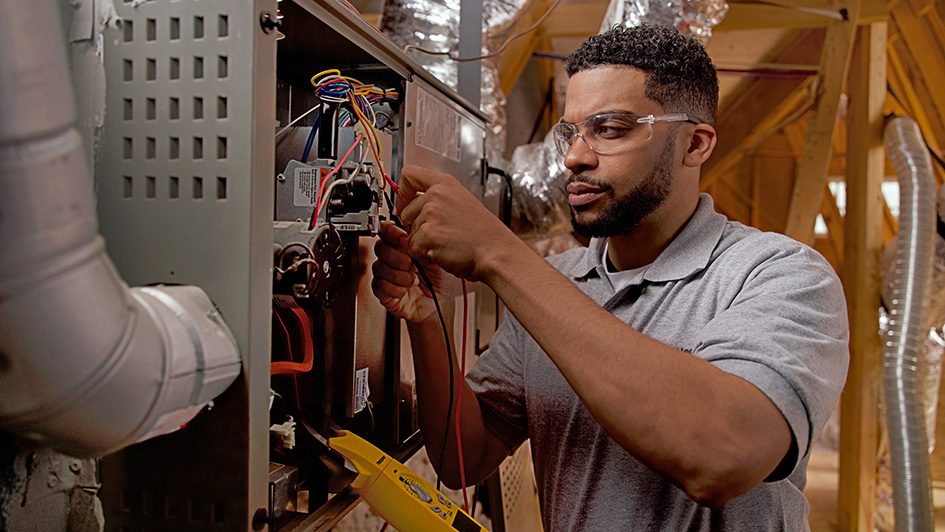
A furnace is usually a background player for your home, keeping you warm in the cold winter months. It regularly doesn’t get noticed until a malfunction appears.
One source could be that your furnace has a cracked heat exchanger. It can be a safety risk, so it’s worthwhile to know the symptoms of a cracked heat exchanger and what you should do if you believe that may be the problem.
What Is a Heat Exchanger in a Furnace?
A heat exchanger transfers heat from the combustion chamber in your furnace to the air that circulates through the air ducts. It typically does this through coils or tubes that warm the air while functioning as a barrier to keep the gasses produced in the combustion chamber, called flue gasses, from leaking out into your home.
Is a Cracked Heat Exchanger Dangerous?
Given its key role, it isn't surprising that a cracked heat exchanger can be very dangerous. A crack in the heat exchanger can allow dangerous gasses – like carbon monoxide, which can be lethal – to be distributed across your home.
For this reason, do NOT turn on your heater if you suspect it has a cracked heat exchanger, as letting it run could make the whole family ill. Reach out to an HVAC professional as soon as possible if you are worried your heater has a cracked heat exchanger that needs repair.
Four Warning Signs of a Cracked Heat Exchanger:
- Furnace shuts off: Cracks in the heat exchanger could cause your furnace to switch off.
- Odd Smells: If the air escaping your furnace has a strong chemical smell, it might be an indicator that gasses are slipping through cracks in your heat exchanger. These gasses, which may smell like formaldehyde, are a common warning sign.
- Carbon monoxide alarm goes off or you feel symptoms of poisoning: If a cracked heat exchanger is releasing carbon monoxide inside your home, your carbon monoxide alarm should go off or household members might experience signs of carbon monoxide poisoning. Symptoms include headaches, dizziness, weakness, nausea, vomiting or feeling sleepy. If an alarm goes off or you feel unwell, get out of the home as soon as you can and then call for help.
- Soot: If you see black sooty accumulating near the exterior of your furnace, it’s an indication something may be seriously wrong.
What You Can Do if the Furnace Heat Exchanger is Cracked
If you suspect your furnace has a cracked heat exchanger, contact a professional well versed in furnace installation Zelienople right away so they can take a look at your system and, if required, handle a furnace heat exchanger replacement. Costs should vary depending on the situation, but estimates often hover around $1,000 to $3,000.
However, the good news is that heat exchangers are generally included in the warranty. You should check the warranty paperwork on your furnace, since while the warranty won't always cover the entire cost of repairs, it could significantly lower your bill.
How to Prevent a Cracked Heat Exchanger in Your Home
One of the most convenient ways to avoid problems in your furnace overall is with consistent furnace maintenance. Furnaces provide the best possible return on investment when they run efficiently. Contacting a skilled professional to check your furnace for broken-down parts, clogs in the air filters and other potential problems can keep you from getting a big bill later on.
It’s also helpful to review your furnace filters every few months – it’s recommended some filters be swapped out every 90 days or sooner if they are dirty or grimy. While the filters are not part of the heat exchanger itself, the strain of drawing air through a clogged filter makes the entire furnace work more vigorously to accomplish its job. And the harder your furnace works, the more strain pieces like the heat exchanger will endure.
